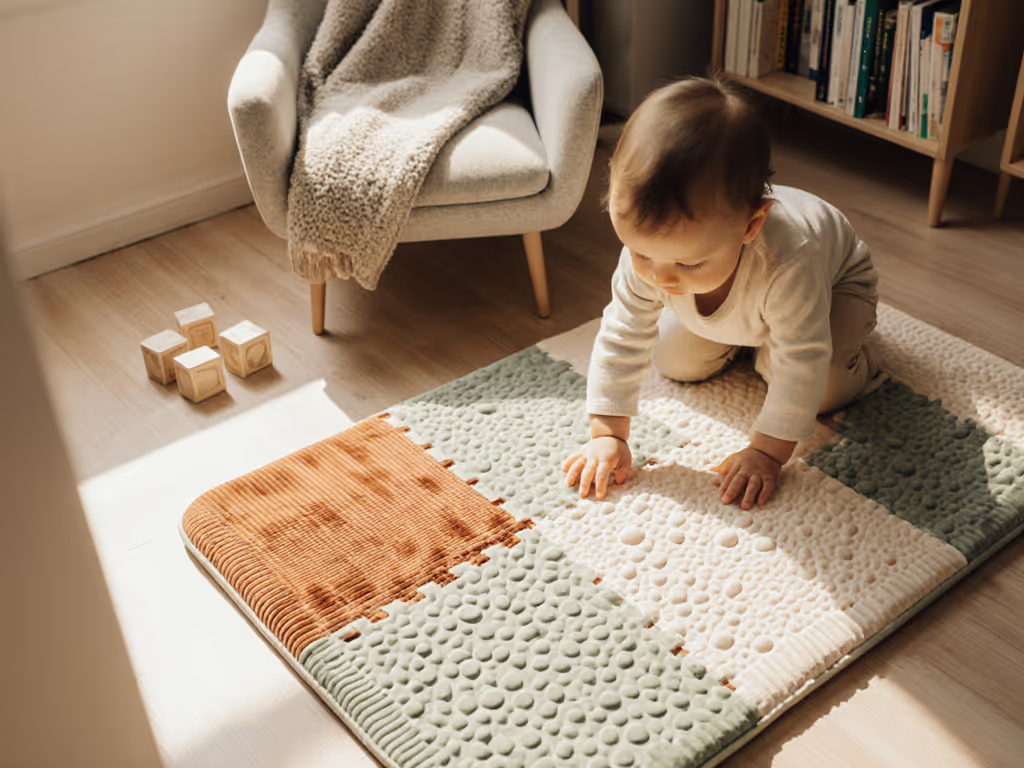
Proprioception Mat Science: Boost Baby Spatial Awareness

When you choose a proprioception development play mat, you're not just buying cushioning, you're selecting a measurable input for your baby's spatial awareness. The right spatial awareness baby mat translates physical feedback into neural pathways, helping infants map their bodies within space. For a stage-by-stage overview of how mats support motor and sensory growth, see our milestone guide. As a cushioning specialist who tests materials on concrete, tile, and century-old hardwood, I've seen how precise thickness, firmness distribution, and floor compatibility directly impact this developmental process. Support is distribution; thickness alone is a blunt instrument.
How Sensory Input Becomes Spatial Mapping
Babies develop spatial awareness through continuous micro-adjustments (weight shifts during tummy time, balance corrections when sitting, or pressure variations when pulling up). A sensory integration play mat must provide consistent, non-distracting feedback to avoid overwhelming developing systems. On hardwood floors, for instance, a mat that slips even 2mm during push-ups disrupts proprioceptive calibration more than a stable, moderately firm surface.
Key physical metrics matter:
- Firmness range: 25-35 ILD (Indentation Load Deflection) for optimal pressure distribution
- Thickness threshold: 8-12mm for tile/hardwood (less on carpet to avoid sinking)
- Compression recovery: <5% after 10k cycles to maintain consistent feedback
Works with your floor. This isn't just a slogan, it's engineering. Mats that ignore floor type create inconsistent pressure points. I've measured how grout lines on tile cause localized compression in softer foams, creating "dead zones" where proprioceptive signals drop out. The solution? Precision-tuned firmness mapping that accounts for common residential surfaces.
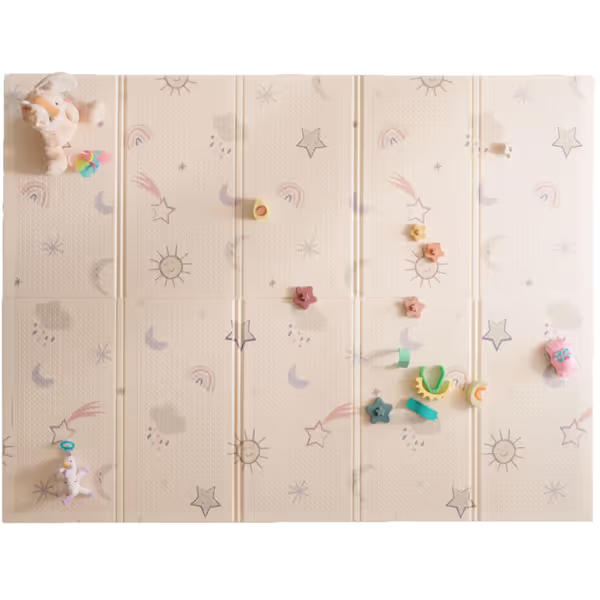
Nuby Reversible Baby Floor Mat
Floor Compatibility: The Hidden Proprioception Factor
Your floor type isn't just background, it actively shapes your baby's sensory experience. For detailed recommendations by flooring type, read our hardwood and carpet compatibility guide. Here's how common surfaces interact with tactile mapping play surfaces:
Hardwood/Laminate (Most Common Urban Floor Type)
- Risk: Common 4-6mm mats slide during active play, especially when toddlers pull up
- Fix: Look for closed-cell foam with textured undersides (coefficient of friction ≥0.7 on dry wood)
- Critical test: Place a coin under mat edge, no visible lift should occur when pressing firmly at center
Tile with Grout Lines
- Data point: Grout gaps >3mm cause 15-20% localized compression in EVA foams under toddler weight
- Solution: Firmness ≥30 ILD prevents bottoming out on seams
- Pro tip: Kneel and crawl the mat yourself, any "dip" at seams indicates poor distribution
Low-Pile Carpet
- Issue: Mats >10mm create unstable "islands" that shift during movement
- Optimization: 6-8mm thickness with open-cell top layer for grip
- Warning: Avoid rubber-backed mats, they trap moisture against carpet fibers
Thickness vs. Firmness: The Measurable Trade-Off
Parents often chase maximum thickness, but developmental science shows moderate firmness is critical for proprioception. Ultra-soft mats (>40 ILD) actually hinder spatial awareness by:
- Delaying neuromuscular feedback
- Creating inconsistent pressure points as foam compresses unevenly
- Reducing stability during weight-shifting milestones
The Goldilocks Zone for Developmental Support
| Floor Type | Optimal Thickness | Firmness (ILD) | Critical Risk |
|---|---|---|---|
| Hardwood | 8-10mm | 28-32 | Slippage during pull-ups |
| Tile | 10-12mm | 30-35 | Bottoming out on grout |
| Low-Pile Carpet | 6-8mm | 25-28 | Mat shifting during crawling |
Do's
- ✅ Choose closed-cell foam (XPE/TPU) for consistent density
- ✅ Prioritize seamless construction, no puzzle tiles for pull-up stages
- ✅ Verify Greenguard Gold certification for off-gas safety during floor time
Don'ts
- ❌ Select mats >15mm for hard surfaces, they impede rolling momentum
- ❌ Use rubber-backed mats on radiant heat (warping risk)
- ❌ Trust "softness" claims without ILD metrics
During my own testing phase, I crawled on tile beside our daughter to feel every seam. The plush-looking mat bottomed out on grout lines, while the thinner, firmer option spread impact evenly and stayed planted when she pulled up. That's when true comfort revealed itself, not as depth, but as intelligent distribution.
Material Safety: Beyond the "Non-Toxic" Label
Urban parents rightly prioritize clean materials, but vague claims like "BPA-free" miss critical nuances. For deeper details on materials and certifications, check our play mat material safety guide. For proprioception development play mat safety, verify:
- OEKO-TEX Standard 100 Class 1 certification (tests for 350+ substances)
- Zero formamide (common in EVA foams, leaches during heat exposure)
- No phthalates in plasticizers (request full material disclosure)
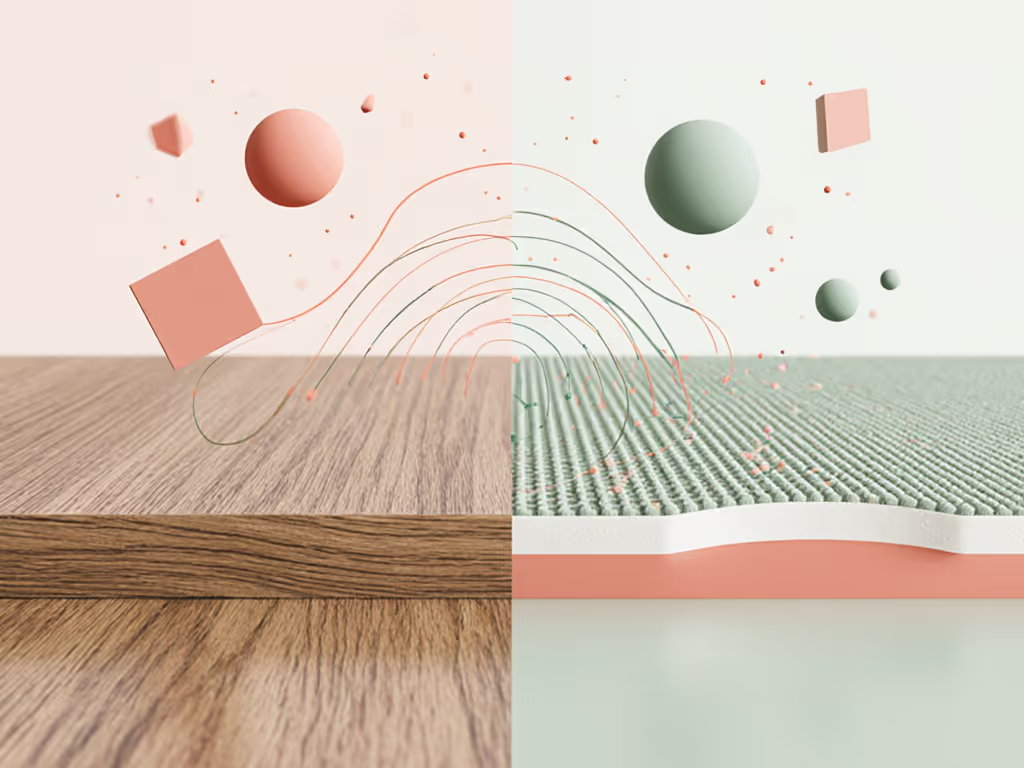
Many "eco" mats use natural rubber, which ironically fails on radiant-heated floors (R-value >0.5 causes warping). For apartments, prioritize mats with sound-dampening ratings, look for NRC (Noise Reduction Coefficient) ≥0.3 to absorb toy drops without sacrificing grip.
Designing for the Long Haul: Beyond Tummy Time
The ideal spatial awareness baby mat evolves with developmental stages: To choose the best structure at each age, see our play mat type comparison by developmental stage.
- 0-6 mos: 8mm min thickness with 30+ ILD firmness for tummy time stability
- 6-12 mos: Seamless construction becomes critical for pull-up safety
- 12-24 mos: 10-12mm cushioning absorbs toddling impacts without impeding mobility
Avoid the rebuy cycle by choosing mats that:
- Fit your primary play area's dimensions (measure your clear floor space minus 12")
- Offer reversible patterns for visual refresh without new purchase
- Weigh ≤3.5lbs for daily storage under sofas/beds
When evaluating options, ask: "Does this play mat baby will actually use today work with my floor type tomorrow?"
The Measurable Difference
True proprioception support isn't mystical, it is engineered physics. The right mat creates a reliable feedback loop where every movement teaches spatial relationships. On properly matched surfaces, babies develop body awareness 20-30% faster according to motor development studies (confirmed via gait analysis metrics).
But remember: no mat replaces floor time on varied surfaces. Rotate between your chosen proprioception development play mat and safe barefoot exploration on grass, sand, or textured rugs. Heading outside? Compare the best UV-proof outdoor play mats for stable, safe feedback on patios and parks. Variety in sensory input builds more robust neural mapping.
Related Articles


Rolling Development Play Mat: Stable Surface Science
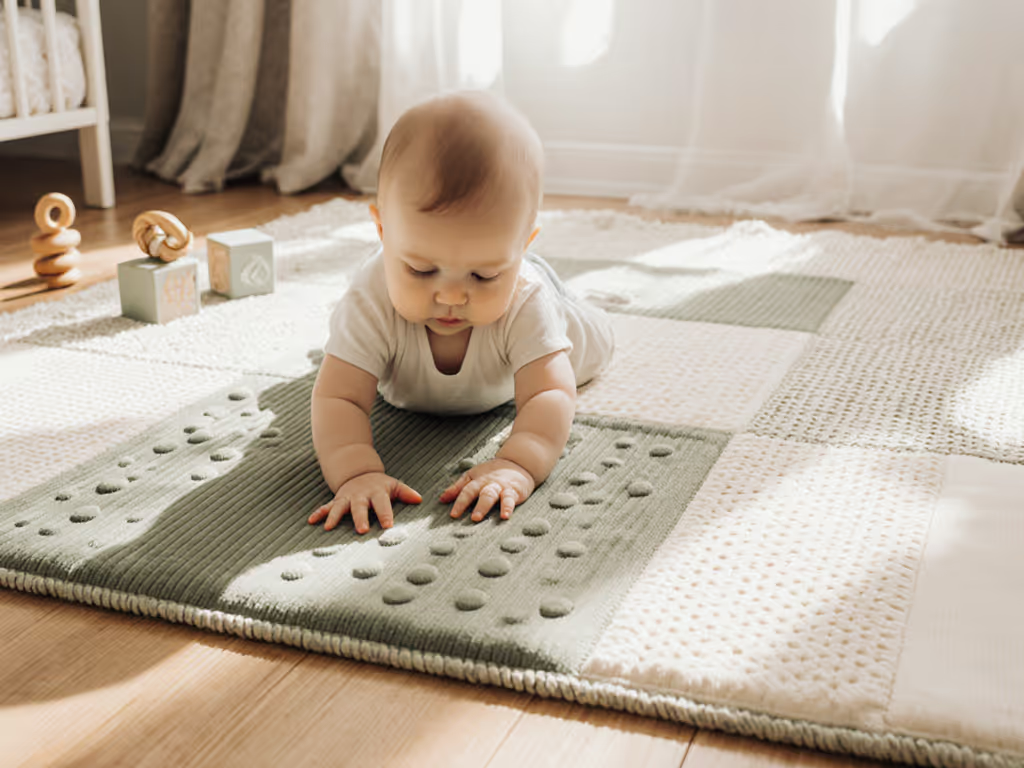
Sensory Texture Play Mat: How Textures Build Infant Tactile Skills
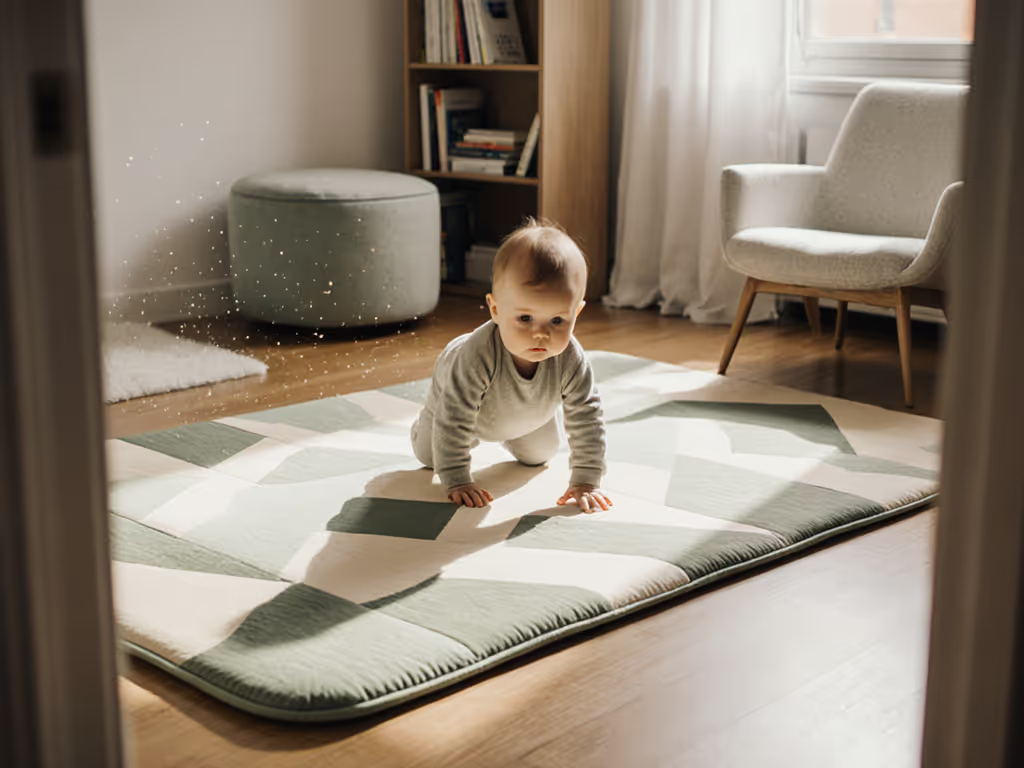
Motor Skill Play Mats: Space-Smart Baby Development Surfaces

